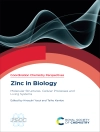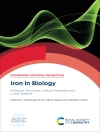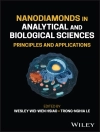To appreciate the chemistry and physical properties of complexes of the transition series, an understanding of metal-ligand interactions applied to complexes of the d-block is needed. Metal Ligand Bonding aims to provide this through an accessible, detailed, non-mathematical approach. Initial chapters detail the crystal-field model, using it to describe the use of magnetic measurements to distinguish complexes with different electronic configurations and geometries. Subsequent chapters look at the molecular orbital theory of transition metal complexes using a pictorial approach. Bonding in octahedral complexes is explored and electronic spectra and magnetic properties are given extensive coverage. The material addressed in this book forms the foundation of undergraduate lecture courses on d-block chemistry and facilitates learning through various key features, including: full colour diagrams; in-text questions with answers; revision exercises and clearly defined learning outcomes to encourage a reflective approach to study; an associated website; and experimental data and observations from everyday life. A basic knowledge of atomic and molecular orbitals as applied to main group elements is assumed.
Table of Content
Introduction; Crystal-Field Theory; Electronic Spectra of Octahedral Complexes; Substituted and Distorted Octahedral Complexes, and Square-Planar Complexes; Tetrahedral Complexes; Magnetism and the Magnetic Properties of Transition-Metal Complexes; Summary of Crystal-Field Theory; Molecular Orbital Theory of Transition-Metal Complexes; Bonding in Octahedral Complexes; Bonding in Complexes of D
4h Symmetry; Bonding in Tetrahedral Complexes; Complexes of other Symmetry; Complexes with Two Metal Atoms; Charge-Transfer Bands in the Electronic Spectra of Transition-Metal Complexes; Revision Exercise; Learning Outcomes; Answers to Questions; Answers to Revision Exercise Questions; Index.












